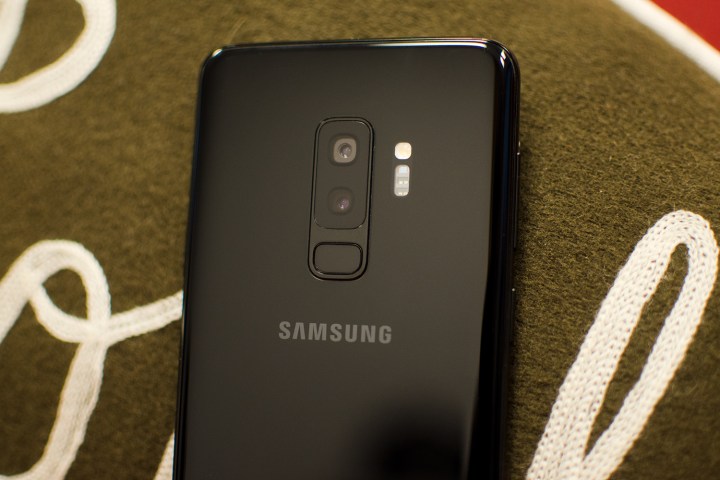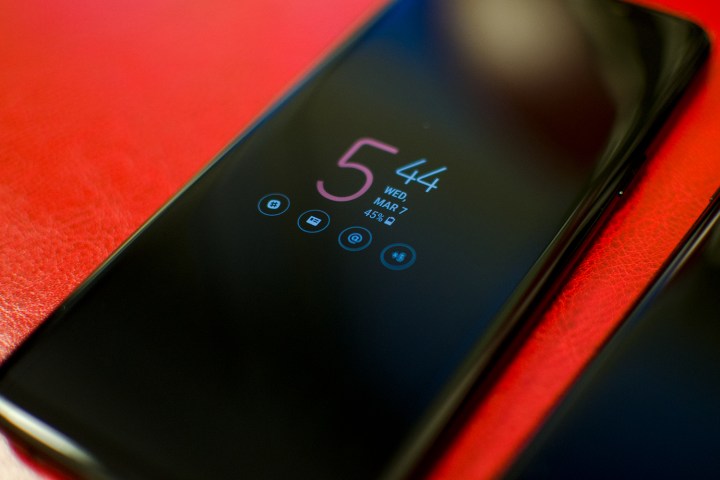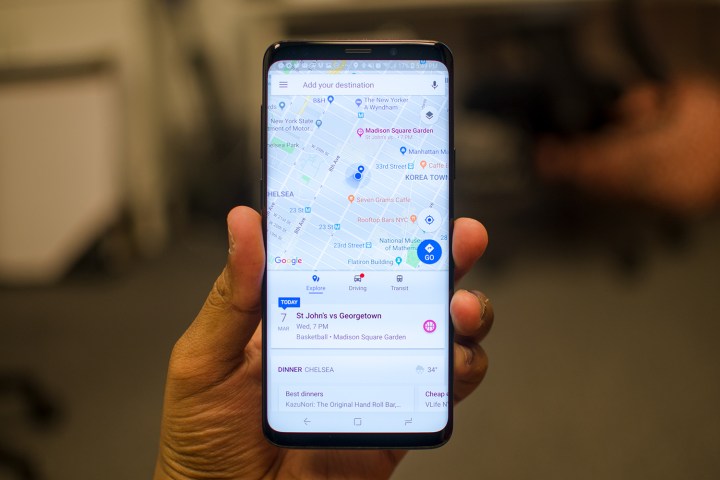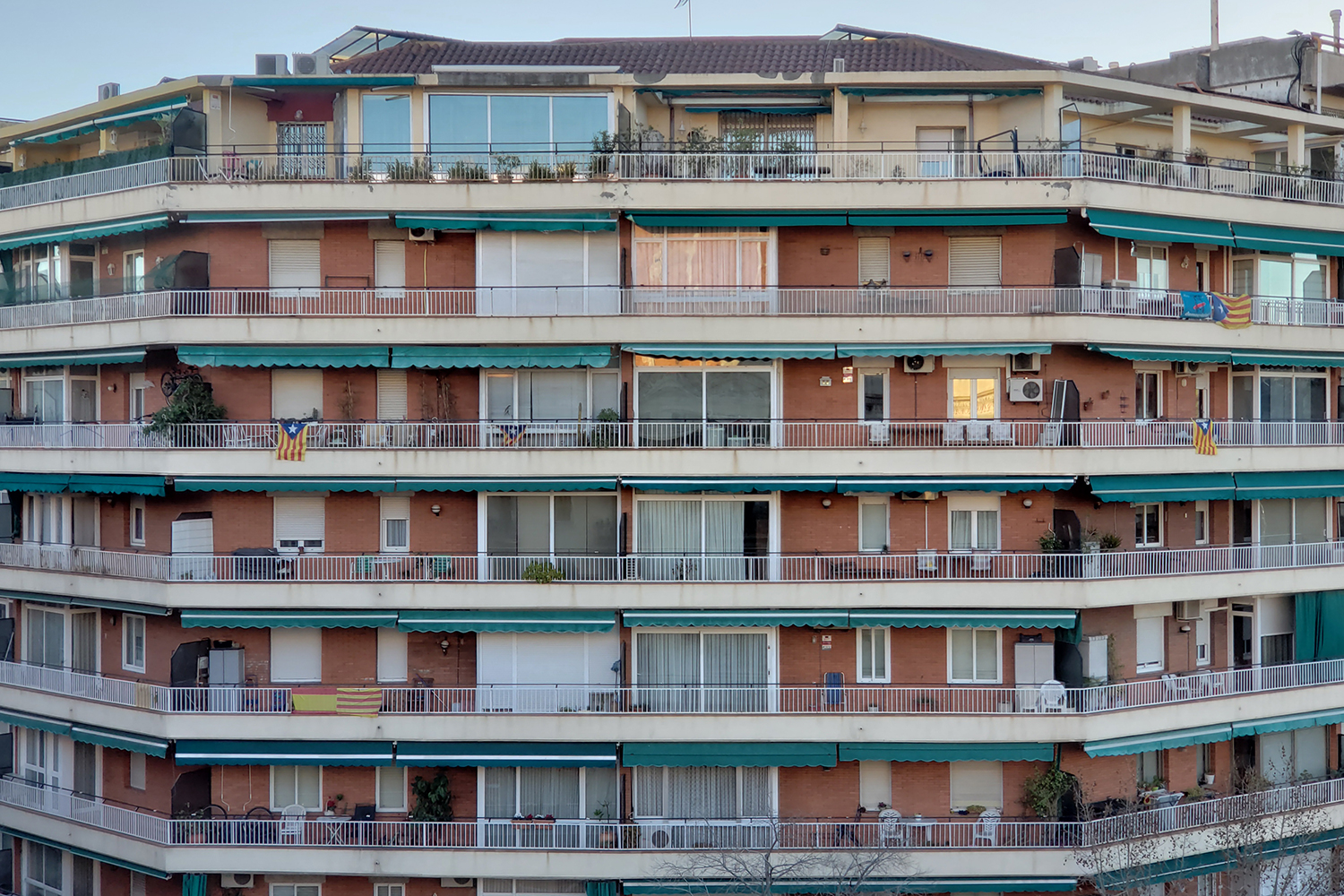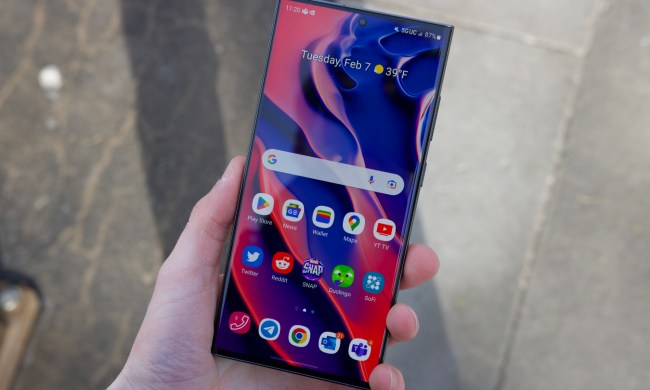- Gorgeous design
- Brilliant, colorful display
- Feature-packed camera
- Excellent low-light photo quality
- Good sound from stereo speakers
- Battery life could be better
- Live Focus produces fuzzy photos
Polished. Refined. These are the words that come to mind when holding the Galaxy S9 Plus, the larger version of Samsung’s latest Galaxy S9 flagship smartphone. Samsung introduced a fresh design language with the Galaxy S8 in 2017 — a design it’s been heading towards for the past few years — and it’s not yet ready to present something new. That’s perfectly fine, because the Galaxy S9 Plus remains undeniably sexy. Are the minor design and hardware improvements worth the high price tag? We think so, because it’s all about the camera with the Galaxy S9 series, and it certainly does impress.
Interested in the smaller Galaxy S9? Check out our in-depth Galaxy S9 review.
Refined design
If you have used or seen a Galaxy S8 Plus, you’ll have a hard time identifying the differences of the Galaxy S9 Plus at a quick glance. From the front, both phones look the same. The Galaxy S9 Plus is marginally shorter, while retaining the same 6.2-inch screen. That’s only possible because Samsung shaved down the bezels surrounding the display ever-so-slightly, improving the screen-to-body ratio. The array of sensors and iris scanner on the top of the S9 Plus are now hardly visible. That panel stuck out like a sore thumb on the S8, but we didn’t find it jarring. Still, it does help make the S9 Plus look a little sleeker.
The power button is in a perfect position on the right edge of the phone, but the volume rocker is on the left edge above the Bixby button. We’ll get to Bixby later, but we’ve already turned off the button’s functionality. Since Samsung doesn’t let you remap it to anything else, the button sits unused, which is frustrating. We’d prefer the volume rocker on the right edge with the power button, because it is a little hard to press without shifting the whole phone lower, reducing your grip.
Flip the phone to its back, and you’ll start to see more distinguishing features. There’s the “Galaxy S9+” label on the bottom, of course, but there’s also a dual-camera system — a first for the Galaxy S series. The flash sits on the right side of the camera.
Like the Galaxy S8, the S9 Plus feels like a smooth pebble capable of skipping across water.
The fingerprint sensor, which drew a lot of criticism on the Galaxy Note 8 and Galaxy S8 Plus, is below the camera, in a far more accessible position. While we appreciate the new location, we still think Samsung could refine it more, as it’s easy to smudge the camera lens. The sensor feels a little too small for our fingers, but it’s quick to react, and does the job well. You can even use fingerprint gestures to pull down the notification drawer with a swipe on the sensor, which is handy for such a large phone.
The 6.2-inch screen is great for videos. To enhance the experience, Samsung for the first time has added stereo speakers tuned by AKG — the top earpiece works in tandem with a bottom-firing speaker — and support for Dolby Atmos technology. Music can fill a large room at maximum volume. There’s not much bass, but the audio is clear and rich. Sadly, we occasionally covered the bottom-firing speaker when holding the phone in landscape mode (dual front-facing speakers, anyone?).
Like the Galaxy S8, the S9 Plus feels like a smooth pebble capable of skipping across water. The phone fit comfortably in our palms, but it may be unwieldy if your mitts aren’t as massive as ours. We do love the phone’s curved edges, as they make it feel smaller and ergonomic. The rear glass easily attracts fingerprints, which we’re not fans of, so make sure you have a microfiber cloth at all times, or nab a case. We’ve found the midnight black color option reveals more fingerprints, which is why we recommend purchasing the lilac or coral blue. There’s also now a Sunrise Gold color available, if that tickles your fancy.
Beautiful Infinity Display, great performance
The Infinity Display hasn’t changed much from last year’s Galaxy S8 Plus, but it’s still a standout feature. The Galaxy S9 Plus’ AMOLED screen boosts Quad HD+ (2,960 x 1,440) resolution, cramming 529 pixels into every inch. The result is an incredibly sharp, bright screen.
Colors are gorgeous, and they don’t feel oversaturated, as we’ve noticed with previous Samsung panels. Watching HDR10 content in apps like Netflix is a binge-watchers dream, as the improved contrast really makes dark shows pop. This is undoubtedly the best screen on a smartphone right now.
Do note, though, that Samsung sets the default resolution to 2,220 x 1,080 pixels when you first start up the phone, likely to help conserve battery life. You can increase it in display settings, which is also where you can tweak the screen’s color to your liking.
The Galaxy S9 Plus is the first smartphone we’ve fully tested with Qualcomm’s new Snapdragon 845 processor, and its improved graphics performance shows. Games like Tekken, The Sims: Mobile, and Sonic Forces run without flaw, offering a fluid experience.
Day-to-day performance is great, with apps opening quickly, and smooth split-screen operation. We did notice a rare stutter, which reminded us of Samsung’s TouchWiz user interface days, but we’re happy with what the Snapdragon 845 offers. The S9 Plus comes with 6GB of RAM, which is more than enough for almost everyone, but you should know the regular S9 only has 4GB.
Here are the results from a few benchmark apps:
- AnTuTu 3D Bench: 263,591
- Geekbench 4 CPU: 2,415 single-core; 8,191 multi-core
- 3D Mark Slingshot Extreme: 4,552 OpenGL; 3,685 Vulkan
The S9’s scores are impressive. For example, the Galaxy S8’s AnTuTu score is 155,253, and the iPhone X’s 206,010 — the S9 Plus is far ahead.
That doesn’t necessarily mean vastly improved real-world performance, though. We found the software experience a little more fluid on the Google Pixel 2 and the iPhone X. However, all these phones are tremendously fast and have no problem dealing with even the most demanding apps. The Samsung S9 Plus stuttered a tad more often, but not nearly enough to be a demerit.
The S9 Plus comes with 64GB of internal storage, but you can also nab a model with 128GB or 256GB. A MicroSD card slot lets you add more if you need it.
Reimagined camera; eliminating noise
The highlight feature of the Galaxy S9 is the “reimagined” camera. Both the S9 and the S9 Plus have a 12-megapixel lens with a variable aperture. We’ve explained what that means in our in-depth guide, but here’s the basics.
The camera has two circular plates on the lens which constrict the amount of light the camera can absorb. One is a f/1.5 aperture, which means the hole is wider, allowing more light in for better low-light shots. However, the camera can switch to f/2.4 aperture, constricting the hole so less light comes in, which is great for most lighting conditions during the day. The narrower the hole (or aperture), the sharper the photograph. That’s why photographs taken with a f/1.5 aperture are not as detailed or sharp as photographs taken with the f/2.4 aperture. That’s why the camera predominantly uses the f/2.4 aperture, and only automatically swaps to the f/1.5 aperture in poor lighting.
Thankfully, you don’t need to know any of that to snap good photos. It all happens automatically, and the user experience remains incredibly simple. If you really want to control the aperture yourself, however, there’s a Pro mode that lets you swap it manually. The camera app has been redesigned for ease of us, slightly mimicking the app on an iPhone. It’s fast to react, and we’ve seen virtually no shutter lag.
What about the results? Photos captured during the day are detailed, with good color accuracy. But low-light photographs captured with the f/1.5 aperture are where the Galaxy S9 Plus shines. Yes, there’s a good amount of detail lost and some photos can appear to be too fuzzy, but we’ve taken photos of dark objects at night, and the S9 Plus still manages to produce a photo worth sharing. We took some photos with the Pixel 2 XL for comparison, and the S9 Plus outshines the Google phone in color accuracy (though not necessarily in detail).
- 1. Pixel 2 XL
- 2. Galaxy S9 Plus
- 3. Pixel 2 XL
- 4. Galaxy S9 Plus
Wait, there’s more! Samsung has also added a featured called ‘multi-frame noise reduction.’ It’s an image processing technique that takes 12 photos at the same time when you tap the shutter button, then compiles them all to eliminate as much noise as possible. If you look at all the Galaxy S9’s photos and compare it to the competition, the difference in graininess and noise is stunning. The photo of Barcelona Cathedral above, for example, shows a clear, even sky. Most smartphone cameras, like the Pixel 2, would add substantial noise to that shot, adding grain to the sky’s smooth gradient.
For more photos taken with the Galaxy S9 Plus, check out our test at Mobile World Congress, and a low-light follow up in Barcelona.
The S9 Plus also has a second, 12-megapixel camera that offers 2x optical zoom and a Live Focus mode, which is much like Apple’s Portrait Mode on the iPhone. This dual-camera system is almost the same as the Galaxy Note 8. The optical zoom photos are well-detailed, and it’s a handy feature to have for objects that are far away. Check out the photos above.
We’ve had some issues with Live Focus, however. Even in good lighting, photos with blurred backgrounds are often fuzzy and lacking detail. We’re not sure what the problem is, and Samsung told Digital Trends we should not be experiencing this problem. Some of the software is still being finalized, so we’ll update this section when we see any improvement. At the current moment, the Pixel 2 and the iPhone X take superior Portrait Mode photos.
- 1. Galaxy S9 Plus
- 2. Pixel 2 XL
The same rings true for selfies taken with the Galaxy S9 Plus. The 8-megapixel front-facing camera is nothing to write home about, even with the new “Selfie Focus” feature, which tries to add a blur around your face for the bokeh effect. It’s trounced by the Pixel 2 and the iPhone X.

There’s also a Super Slow Motion camera mode, which can capture 960 frames per second (32 times slower than real life), like recent Sony Xperia phones. It takes a little getting used to because you need to time the slow motion accurately on manual mode, or need to learn how auto mode works. Once you have it down, though, it’s a fun feature to have, and we’ve found ourselves trying it on a variety of fast-moving scenes. The resolution is only 720p, however. Sony’s upcoming Xperia XZ2 can handle the same slow-mo shots at 1080p.
AR Emojis are a new addition to the S9, and unlike Super Slow Motion, it’s likely a feature we’ll avoid using.
AR Emojis are another new addition to the S9, and unlike Super Slow Motion, it’s likely a feature we’ll avoid using. You can create your own emoji to animate using motion tracking technology — like Apple’s Animoji — but the tracking isn’t great, and we’re not fans of the emoji design. If they’re not cute, who would want to share them? Still, at least one of our staffers was happy with how the AR Emojis look. If Animojis are any indication, people will 
The Galaxy S9 Plus snaps great photos, and its low-light capabilities is best-in-class. The Super Slow Motion video feature is a fun addition, and we constantly use the 2x optical zoom for distant objects. The jury is still out on Live Focus. If you don’t care much for 2x optical zoom or Live Focus, you’re better off buying the smaller Galaxy S9 as it doesn’t come with that second camera. You still get access to Super Slow Motion, as well as the variable aperture, and multi-frame noise reduction image processing.
We still think the Pixel 2 XL keeps its title as the best camera phone, but Samsung easily beats Google’s phone in challenging lighting conditions, and often wins out in color accuracy — it’s a close race.
Plenty of software customization
The Galaxy S9 Plus runs Android 8.0 Oreo, with the Samsung Experience 9.0 user interface layered over. It looks sleek, minimal, and much-improved over the infamous TouchWiz UI on older Samsung phones. Android 8.0 Oreo introduces a host of features such as picture-in-picture mode, unread badges on app icons for new notifications, a simplified settings app, and more. The software experience on the Galaxy S9 Plus is better than ever.
There’s plenty of customization options to make your phone feel unique. For example, you can choose from a variety of clock designs for the always-on display, and you can even pick any color from a color wheel for further personalization. Most people won’t dive into these options, but we’re happy to see it available.
Samsung has come a long way, and we’re loving how the software looks.
Another way to see the sheer amount of options is with the biometric unlocking technologies available on the phone. You can use the iris scanner, fingerprint reader, or facial recognition to unlock the S9, or use them all at the same time. Our favorite is Intelligent Scan, which primarily uses the iris scanner as the main way to unlock the phone, but it falls back to facial recognition if iris doesn’t work. The experience feels a lot like unlocking the iPhone X with FaceID. It’s not as fast as the fingerprint sensor and it doesn’t work all the time, but it’s reliable enough to feel convenient.
In our testing, the Google Pixel 2 still offers the most fluid Android experience on a smartphone, likely because Google can optimize the hardware and software. Still, Samsung has come a long way, and we’re loving how the software looks. Our biggest complaint is with updates. The Galaxy S8 and S8 Plus are in the beta process for Android 8.0 Oreo, more than 7 months since Google released the new Android version. The first developer preview of Android P is now available and should officially launch in August, but it’s sad that we likely won’t see it on the S9 and S9 Plus until early next year. If you want the fastest security or version updates, buy a Pixel 2 or an iPhone.
Bixby remains a nuisance
When we talked about performance, we mentioned the occasional stutter. The easiest way to see this is to slide right from the home screen to open Bixby. Opening Bixby Home is slow, and there’s a lot of lag. The artificially-intelligent was first introduced on the Galaxy S8 as a way to perform phone-specific functions via voice. After a year since launch, we still feel no desire to ask Bixby to do anything, not because it can’t, but because it’s cumbersome, and doing things manually is often faster.
The new additions in Bixby Vision are features we’d likely never use, even if they are neat. Our favorites are instant language translation, which can be a little wonky, as well as the Makeup tool, which layers makeup from Sephora and Cover Girl over your face so you can try products out. The Food tool lets you estimate calories when you point the camera at food, but it isn’t accurate, which kept us from using it consistently.
Overall, we like the new additions to Vision, but we also wouldn’t mind at all if Samsung just deleted Bixby and all its features in its next phone. There’s just not much to like, and Google Assistant is more reliable and faster.
Day-long battery life
If you’re a power user, you’ll likely need to juice up the phone a little towards the end of the day.
The Galaxy S9 Plus’ battery life is about average, if not a little on the low side, when compared to most smartphones in its class. After taking the phone off the charger at 7:30 a.m., we ended up with 39 percent at 3:45 p.m., and 25 percent by 6 p.m. That’s with the phone on max resolution and 50 percent brightness, with heavy usage including YouTube, video calls, photography, and web browsing.
If you’re a power user, you’ll likely need to juice up the phone a little towards the end of the day. If not, you should see it last you for a full day. There’s also a way to optimize the battery for your needs in the device management settings, so you can get the most amount of time with your phone.
The Galaxy S9 Plus supports fast wireless charging and fast wired charging, so it doesn’t take long to recharge.
Price, availability, and warranty information
The Galaxy S9 Plus costs $840 unlocked from Samsung, and there are plenty of ways to purchase the phone via a monthly payment plan, or through all U.S. carriers. Check out our buying guide for more details. It’s available for pre-order now, and will officially go on sale on March 16. There are plenty of accessories you may want to check out to add to your purchase.
Samsung offers a 1-year warranty on the S9 Plus, and that covers manufacturing defects. You can purchase Samsung Premium Care for an extended warranty and other perks.
Our Take
The Galaxy S9 Plus brings a refined design, but it’s the ‘reimagined’ camera that makes this phone stand out, and worth the high price tag.
Is there a better alternative?
Maybe. If you’re looking for stock Android phone, the Google Pixel 2 XL is still our top recommendation. Updates are important to us, and if you think so too, getting the Pixel means you’ll get fast security and version updates. We think the software experience is cleaner on the Pixel 2 XL, as well, and it’s more fluid. The Pixel 2 XL has a stellar camera, and while the Galaxy S9 may beat it in low-light photography, there are plenty of other areas where the Pixel 2 comes out on top. Daylight photos, and even some nighttime shots, are more detailed, and Portrait Mode produces stunning images.
Obviously, iOS fans will need to take a look at the iPhone X. From its gorgeous design, strong camera, and fluid software, there’s plenty to like with Apple’s latest flagship. If these phones are out of your budget, check out our best cheap phones guide for plenty of other great options.
How long will it last?
The Galaxy S9 Plus will last you about three years, perhaps more. It’s IP68 water- and dust-resistant, which means it can survive dips in water, but it is sandwiched in glass, so you’ll want to make sure you have a case or a screen protector. Samsung will likely offer software updates up to two years.
Should you buy it?
Yes. The Samsung S9 Plus is a statement of best-in-class hardware.
Updated on June 20: We’ve added information about the Sunrise Gold color option, as well as the 128GB and 256GB models that are available.


